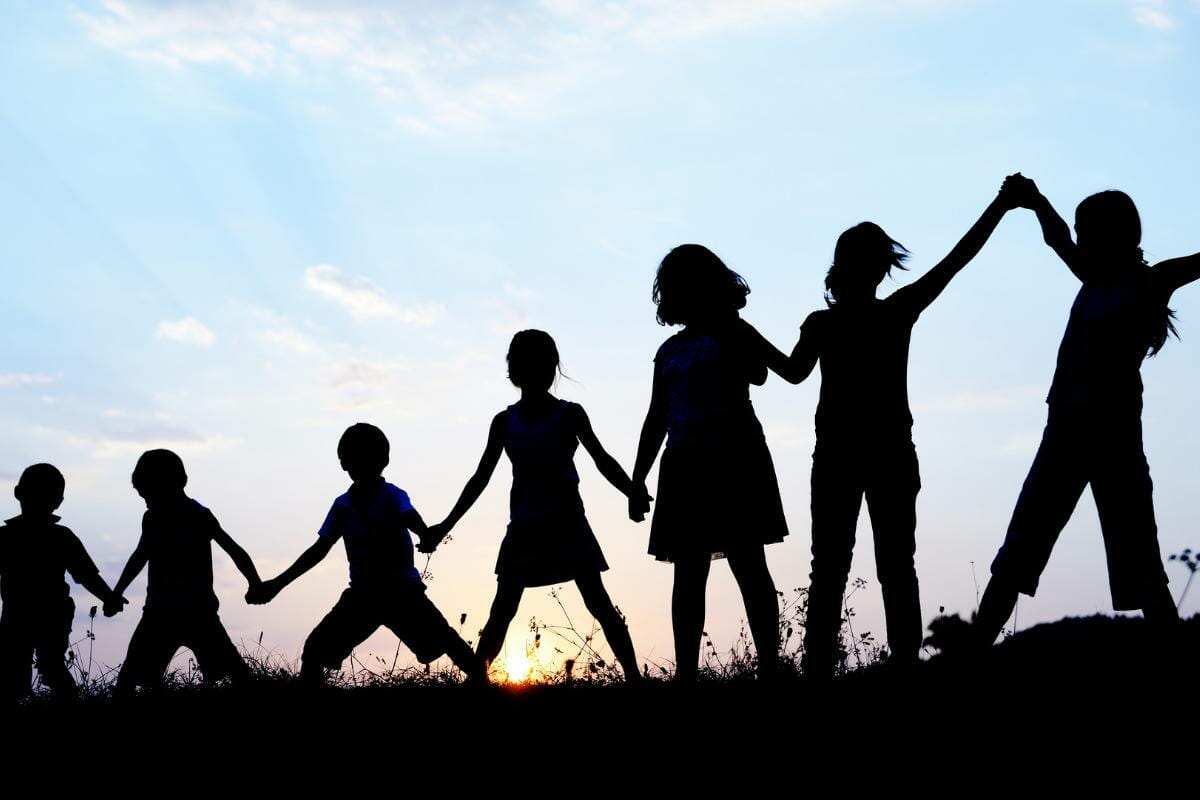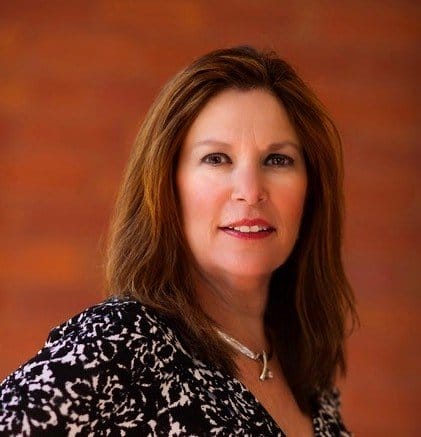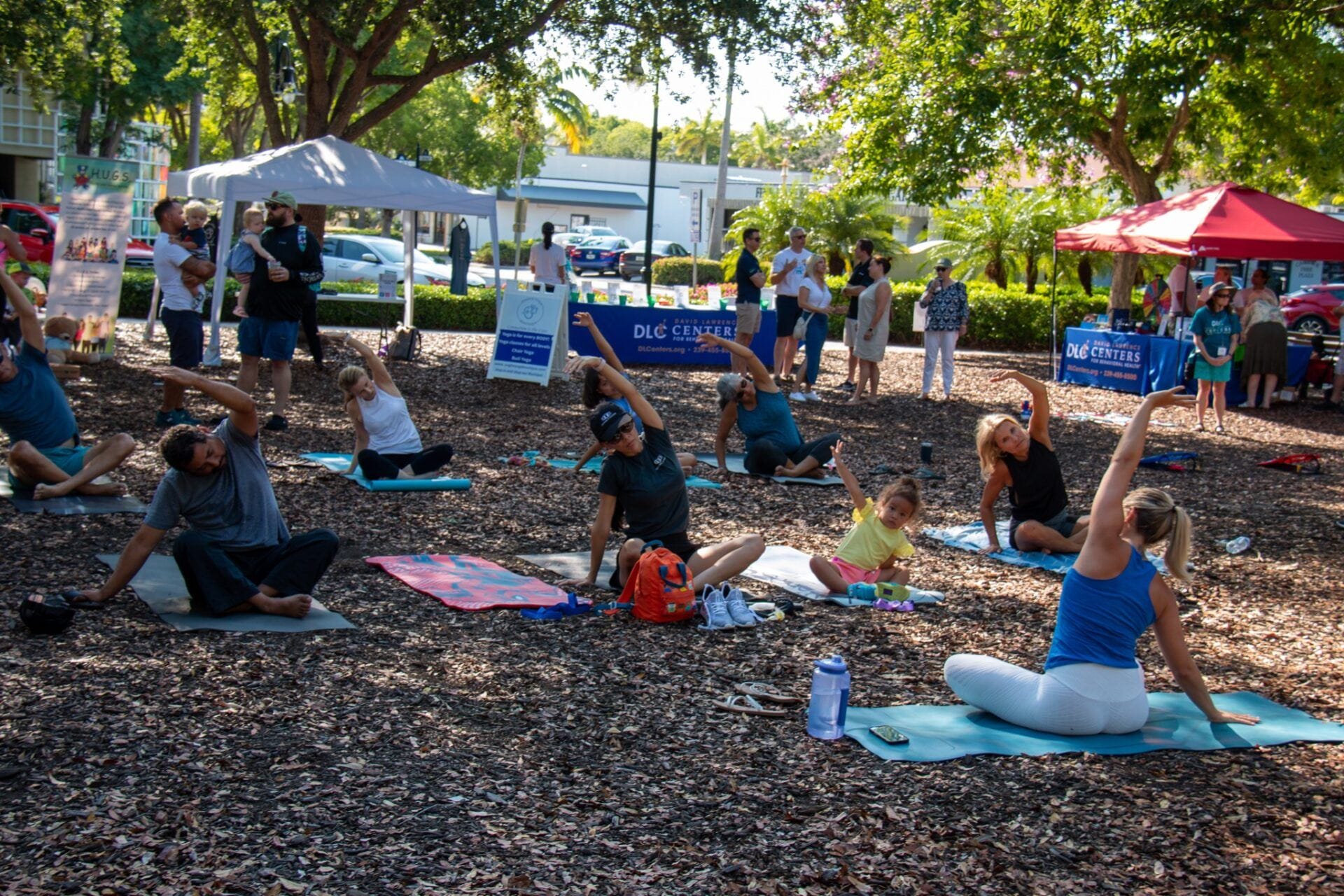
Mental Health Starts at Home: Engage Your Children in a Family Wellbeing Plan
by DLC Community Partner Lisa Gruenloh, MPAP, CPC, Founder and President of Purpose Journey®
In Southwest Florida, we have all kinds of tools, systems, and routines for proactively protecting our homes. We lock our doors and install security systems to guard against potential intruders. We have entire checklists to prevent damage and protect our loved ones from severe weather. We even adhere to regular routines for keeping our lawns trim and green all throughout the year.
Have you ever thought about the tools, systems, and routines that can protect your children’s and family’s mental health? Stress and anxiety have become a pervasive challenge for both adults and children, with potential emotional triggers lurking around every corner of work, school, and other environments. We can’t control most external environments any more than we can control the weather, but what about our home environment?
How might we design our family interactions and daily routines to more proactively foster mental and emotional wellbeing at home?
Your Family Wellbeing Blueprint
An important disclaimer: this approach is not meant to replace professional support for mental health conditions such as depression or anxiety, and it’s not meant to be inclusive of every possible health factor. It simply helps us become more aware of opportunities to cultivate an environment that promotes wellbeing and provides structure to form playful, calming, and nurturing habits, individually and collectively, as a family.
A few helpful guidelines:
- Your Family Wellbeing Plan will intentionally benefit all family members. Studies consistently indicate that the mental health of adult caregivers and children are closely linked. As a devoted parent or caring adult, nothing will motivate you more to focus on your own wellbeing than doing what’s in your child’s best interest.
- For the sake of simplicity, design your initial Family Wellbeing Plan using three primary themes: Play, Calm, and Love. These are easy concepts for kids to grasp and each encompasses a wide range of rich possibilities.
- Consider each theme in terms of both family and individual needs. That helps everyone learn to take responsibility for their own wellbeing, while supporting the wellbeing of others.
- Most importantly, make this a fun family project that allows everyone to share their wildest ideas without judgment. Allowing kids to help shape activities and influence decisions will better ensure their ongoing enthusiasm, engagement, and ultimately their wellbeing.
Exploring the Family Wellbeing Themes
PLAY. Unstructured playtime has many benefits for children. Play with both peers and adults helps children develop important social and emotional skills, enhance mental and physical health, and even improve cognitive abilities and academic performance. Play is important for adults, too. In addition to the benefits already mentioned, playful downtime for adults helps increase creativity and capacity for imaginative, innovative problem-solving that can even lead to being more valuable contributions at work.
Idea starters:
- Encourage individual artistic and creative activities such as painting, coloring, writing, music, dancing, building, imaginative play, etc.
- Plan a family game night once a week. Go “old school”: cards, board games, puzzles.
- Go on field trips to a local museum, zoo, nature center, etc. Many of these places offer reduced-price family days.
- Find a physical activity that everyone can enjoy together, such as walking, bicycling, gardening, or yard games.
- Nurture relationships and social connection through peer playdates, group activities, and parent date nights.
CALM. With intention and attention, our home can serve as a safe harbor. It starts with learning and practicing ways to calm our own mind and extends a sense of calm to our outer environment. The importance of children experiencing a sense of safety at home is paramount to their growth and development, as well as their long-term mental and emotional health. Adults also need a respite from workplace and other stresses that can impact their health, how they respond to challenges, and interactions with others.
Idea starters:
- Practice productive ways of resolving conflicts and be mindful of the power of words. Notice the ratio of negative versus positive energy.
- Limit screen time and be mindful of the quantity and quality of news and media consumption.
- Dedicate at least one space in the house or yard that is a designated quiet spot.
- Learn and practice “quiet” activities like focused breathing, meditation, contemplation, and journaling.
- Reduce clutter in living spaces, choose calming colors in your décor, or add live plants to bring nature indoors.
LOVE. When love is practiced, it isn’t just a noun (a feeling), it’s a verb. Each of us experiences feelings of love through the actions of others. So how can we work more loving actions into our everyday lives? Positive psychologist Dr. Barbara Fredrickson has extensively researched emotions and shares that one powerful way love is expressed is through “micro-moments” of “shared positivity” that occur through demonstrations of mutual care, concern, and connection.
Idea starters:
- Commit to becoming more present with family members. Remove distractions, make eye contact, and attune to the meaning of what is being expressed both verbally and non-verbally.
- Use words of praise, encouragement, and support as often as possible.
- Understand each family member’s unique “Love Language and find small but creative ways to help them feel special.
- Write notes of appreciation to loved ones, both within and outside of the home.
- Find meaningful ways to be of service to others and volunteer for a cherished cause as a family to cultivate compassion and shared purpose.
Developing Your Plan Together
Just as you might do in the workplace, start your planning process with an assessment of your current situation (questions one and two below). This helps get everyone’s perspective about what’s going well and where the opportunities are. As the adult, this is a time to be open and empathetic – just in case you hear something that makes you feel like you could have been doing something better. You are doing something better, so do your best to stay focused on the opportunities ahead without judging yourself for what is.
Brainstorm Ideas. An easy and highly effective format for action planning in organizations will work great here. Use a round-robin format to hear from everyone in turn, and ask:
- What do we want to keep doing? (Start with appreciating what’s already working.)
- What do we want to stop doing? (Remember to respond with openness and empathy.)
- What do we want to start doing? (End with exciting new commitments.)
Choosing Activities. Hopefully, your family will generate a very long list of ideas. From the collective input, work together to prioritize the items you want to stop and start doing. Perhaps you can number them in order of most to least important or put a star by the ones that have the most support. There’s no reason to eliminate activities in your “keep doing” section unless you want to replace them or switch them out periodically with something else.
Here are some ways to begin putting your priorities into practice:
- Explore the value of having some common agreements, such as “We sit down for dinner together or play a game before settling in for a family movie.”
- Think about which activities might be most effective as daily, weekly, monthly, or yearly priorities.
- Map out the next week as a starting point to explore how your Play-Calm-Love priorities might be worked into your family’s life based on your schedule.
- Identify one priority that could be a fun family project, such as creating a quiet, relaxing space in the house or yard or choosing a family volunteer activity.
Making it Work. Home isn’t work. Obviously, this needs to be fun or it will be one more thing on the “have to” list rather than the “get to” list. Ensure the proper amount of flexibility, especially for your own sake. Be sure to manage your own and your children’s expectations by implementing new activities over time. Trying to do too much too soon will likely add stress and anxiety, which defeats the purpose.
Also consider these tips:
- As you develop more conscious wellbeing habits, help extend and deepen this way of being for each individual. Cultivate a family “culture” in which each person feels they can ask for what they need, while also being proactive with supporting others.
- Invite each person to use their “calm time” to reflect on what they personally enjoy doing (alone or outside the family) to play, stay calm, and experience love and connection both as the giver and receiver. Find ways to make those activities happen.
- Every few weeks, check in as a family to see how things are going. This is a great opportunity to practice empathetic listening and demonstrate care by making adjustments as needed.
Closing Thoughts
Licensed mental health professionals can help you develop a more formalized family wellness plan that incorporates a broader set of wellbeing factors and helps navigate challenges that would benefit from their expertise and support.
Think of this framework as a way to develop a healthier home environment that helps make mental and emotional wellbeing an everyday practice. Have fun with the process and know that every little effort can make a big difference for you and your entire family!
Lisa Gruenloh is an International Coaching Federation (ICF)-certified executive and emotional intelligence coach. She’s Founder and President of Purpose Journey®, a consulting, training and coaching company that helps individuals and organizations harness their unique values, strengths, and purpose with bold action to optimize wellbeing and impact. During the COVID pandemic, Lisa launched a new venture publishing and donating writing journals and offering workshops to non-profit organizations. Her Journal for Change initiative is now a 501(c)(3) organization that brings the transformational practice of journaling to non-profits nationwide. Learn more at www.purposejourney.com and www.purposejournal.com.
Feb 07, 2023 | Blog, Mental Health



